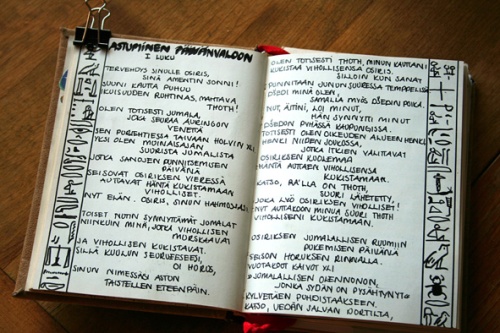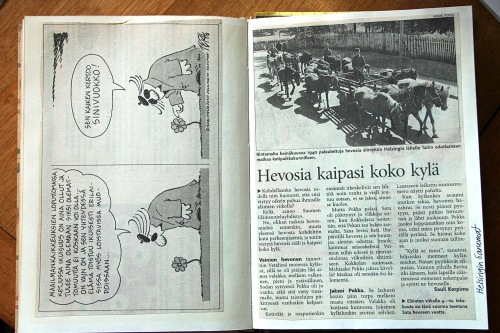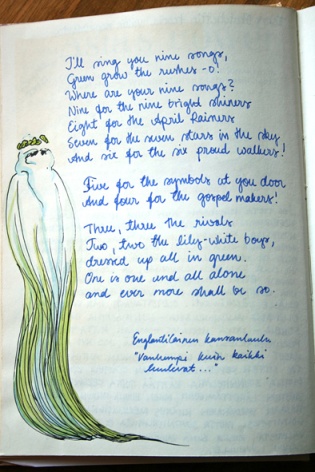I was visiting Cawdor Castle, Scotland, two years ago (once again) and I bought a book titled Thistle in Aspic – Leaves From the Commonplace Book of Hugh Cawdor by the dowager countess. First of all, if you’re ever in that neck of the woods, you should visit the place. Gardens are great and the castle itself is really interesting. The late earl, 6th in the row, Hugh wrote interesting and pretty different introductory texts for each room. That in itself is, I think, a pretty good reason for a visit: it’s not often you see giggling and laughing visitors in such places. But the main point for mentioning Cawdor is the title of that book: until I saw it in the castle bookshop, I had no idea that the books I had been keeping were called commonplace books and that they had hundreds of years of history. You can read more about that here, in Quinn McDonald’s blog, where we have been talking about it too. She took the time and the look into the history and kindly put together a post about it. Thanks!
My first commonplace book was inspired by the movie Indiana Jones and the Last Crusade, where Indy & co. race after the Holy Grail with the help of Indy’s father’s journal into which he has compressed all he knows about the Grail. That was well before The English Patient which also features a commonplace book (you could say that the books is one of the characters) and is often mentioned as an source that popularised commonplace books. But the third Indy came first, that’s all I’m saying, and I wanted to have something as cool as that. So I got myself a journal, covered it in leather and got on with it. I put everything in it, just as I should: poems, thoughts, quotes, cartoons I cut out of papers, news articles, and pictures of all kind. Here’s a spread containing the opening lines of the ancient Egyptian Book of the Dead:
The next one was a slightly larger one, once again with leather covers, but the paper quality was slightly poorer. I made sure the third one came with better paper. I meant to make leather covers for it too, but never did. Who knows why.
The left page is a cartoon from a newspaper. The character (a self portrait of the cartoonist) says: ‘Eternity will always exists in the endless chain of universes. That’s why non-existence can never exist… There is only is and with it the life repeating eternally in all its glory… All that was told by liverwort!’ In my first commonplace book I have written down short Buddhist anecdote where a flower is used in a similar meaning. On the right is a short article titled ‘The Horses Were Missed by the Whole Village,’ a story about warhorses and how they came back home after the second world war. Sadly I have failed to write down the date for that article, but it must be sometime in October 2001 I think.
And then there is this interesting poem/song in that same book:
I have written under it ‘An English folk song “older than everyone thinks…” ‘. I know I got it from a book that dealt with English folk traditions but which one. Would be so interesting to know more. What do the numbers in it symbolise? I get the seven (the Big Dipper, obviously) but what about the others?
The latest one is more like a scrapbook as I have put much more effort in the layouts etc. but I’ll write a special post about that some other time. But there’s a small treat still left. My first commonplace books ends with this page. The newspaper add says: ‘For sale Cats: Charming, gelded and vaccinated kittens without a home. Call…’ and then, under it: ‘A white, of assignment age, BRITISH boy. Registered. Affordable.’ Oh, dear. I hope every caller read the title…


